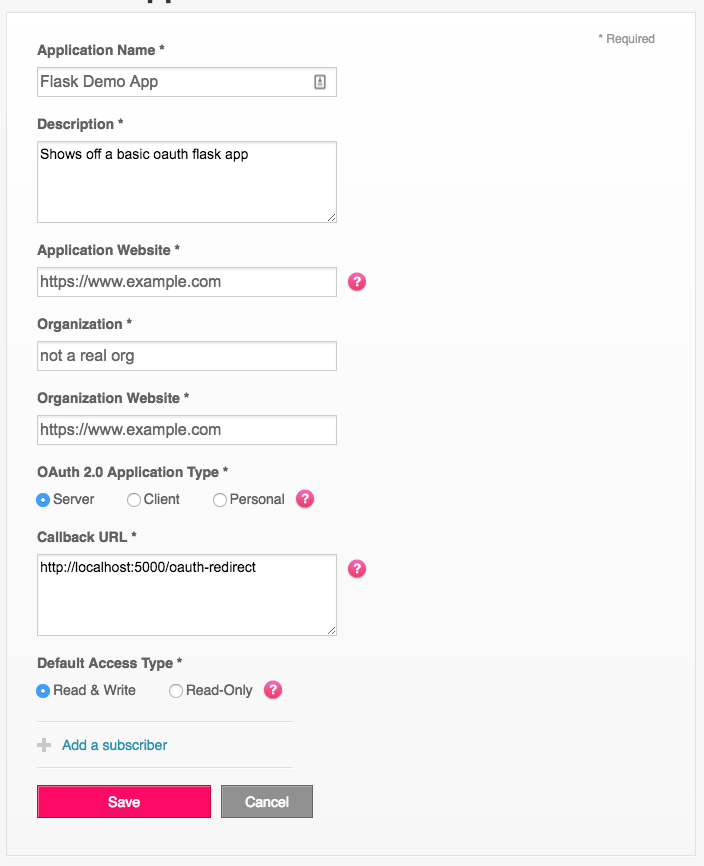#Fitbit OAuth Flask Template
This project defines a basic structure to make applications based on the Fitbit API. It is written in Python 3.5
It defines an app structure that will give you a database, a login form, and a very basic registration form.
The Flask Structure is from Miguel Grinberg's Book
If you wish to learn more about Flask check it out. Or the Flask Project Page
Read More About the Fitbit API
First fork this repo
Then create a Fitbit App Config.
This is the config I used while developing. Your app may not need read/write access.
Once you have that you need to define some environment variables
Here are mine (with secrets faked. Your app will have its own values for most of these). Almost all should be treated with care because if they are leaked your app will be compromised
# Retrieved from dev.fitbit.com/apps/ for the app created earlier
FITBIT_CLIENT_ID=217sdd2
FITBIT_CLIENT_SECRET=321cb9d7g7f8b3c0bf1e24c50169f11
# Key used for CSRF protection
SECRET_KEY=sdasdas
# Signal to the app to use the development config defined in config.py
# When running tests this should be set to 'testing'
FLASK_CONFIG=development
To define an environment variable in Unix environments you can use the export command
export SECRET_KEY=sdasdas
See This superuser post for defining environment variables in windows
After defining those you are ready to setup development.
While the app uses sqlite for development its is designed to eventually be deployed to Heroku and requires Postgres to be installed. You should be able to install this with your package manager of choice. If you don't care about Heroku and dont intend to use Postgres for your production app you can remove the dependency psycopg2 from requirements.txt
# Create a virtual environment for
pyvenv venv
source venv/bin/activate
pip install -r requirements.txt
# Try the tests! They should pass!
py.test tests
Next, you should decide on the OAuth scopes for your project. Specifically, define what data your app will be accessing from people's Fitbit accounts. These are defined in fitbit.py. This example only uses the profile scope. Your app will almost certainly need more than that.
Almost there. The first time you run the app you need to create the database. With your virtual environment activated run
python manage.py createdb
Finally to run the app simply make sure your virtual environment is active and run
python manage.py
* Running on https://127.0.0.1:5000/ (Press CTRL+C to quit)
* Restarting with stat
* Debugger is active!
* Debugger pin code: 129-285-482
This app has been put on heroku so you should be able to get it working there as well.
The app as written will only access your fitbit profile to demonstrate OAuth working. Try It Out
